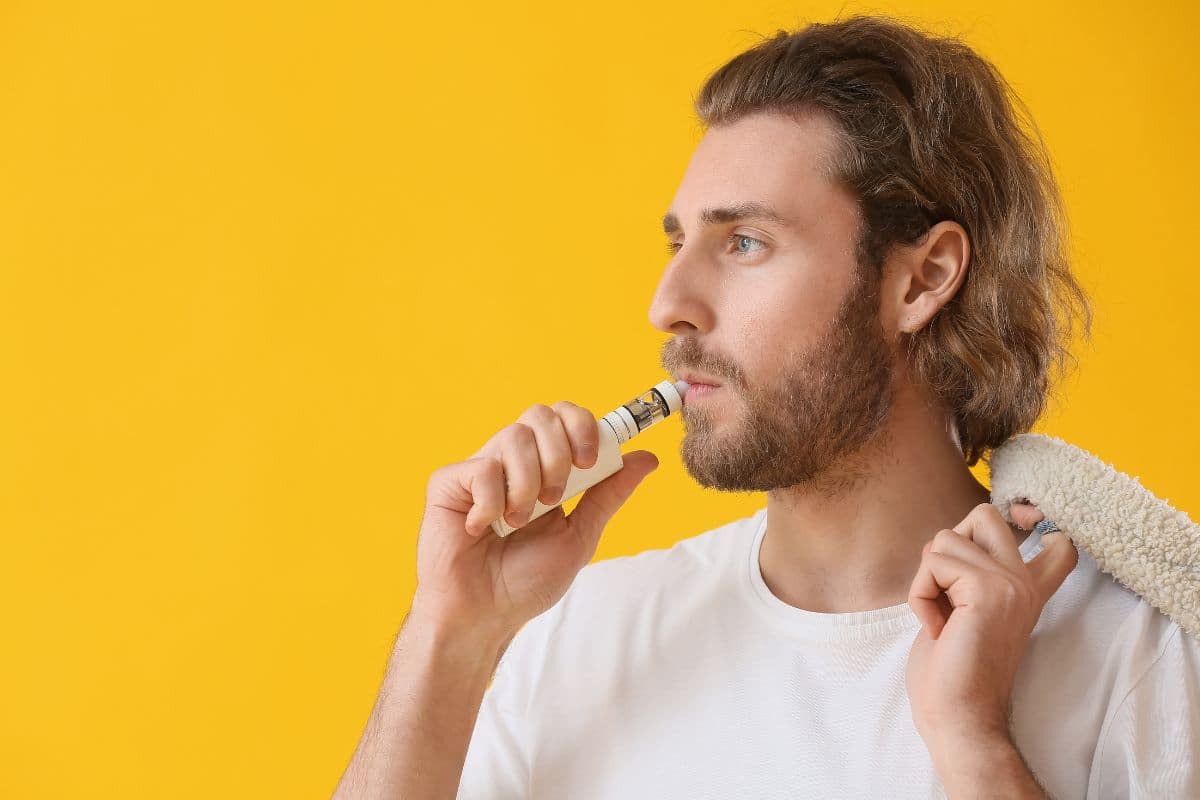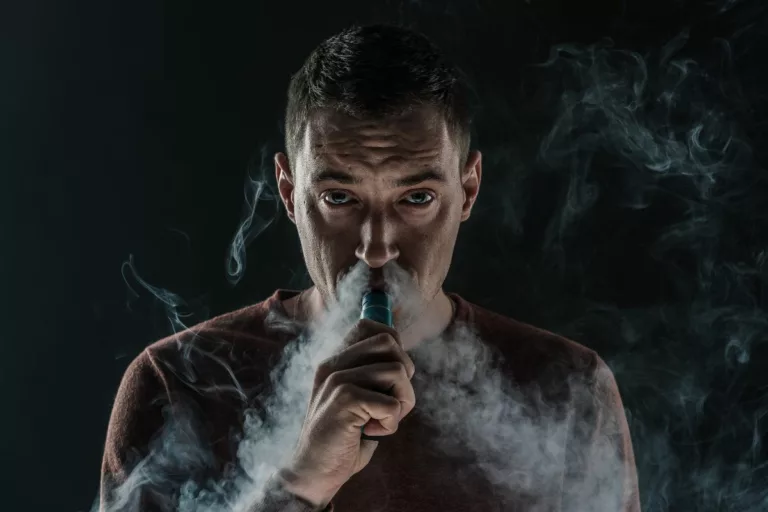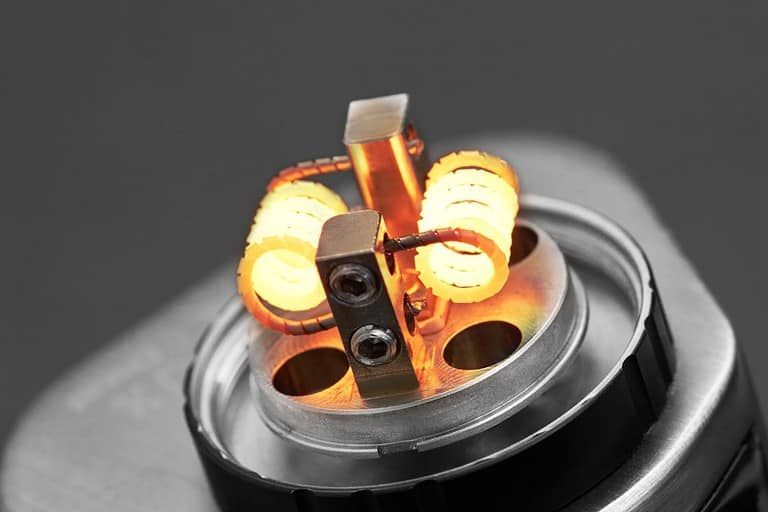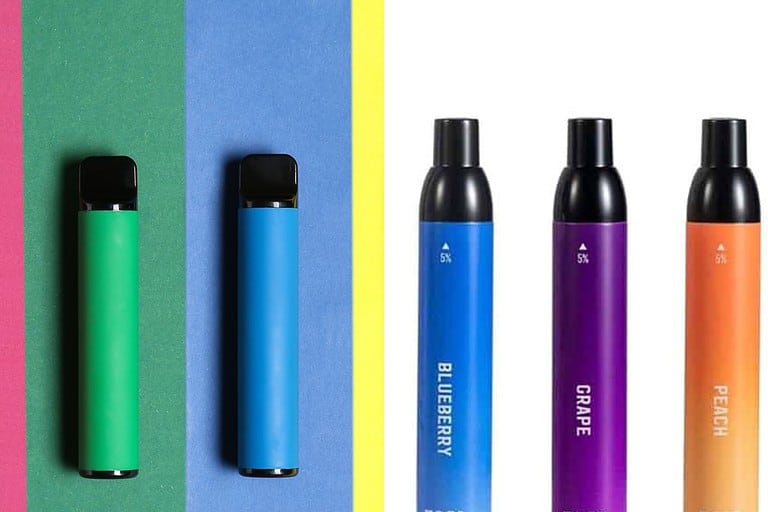Does Vaping Leave a Smell on Clothes? Uncovering the Truth
Vaping has become increasingly popular as an alternative to traditional smoking. One of the many reasons people are drawn to it is the belief that it may not leave the telltale smell of cigarette smoke on their clothes, breath, or surroundings that traditional smoking does. Nevertheless, the question remains: does vaping leave a smell on clothes?
The truth is, while vaping does produce some odor, it is generally much less noticeable and lingering than the smell of cigarette smoke. Vaping involves the use of e-cigarettes that heat a liquid solution (e-liquid) to create a vapor, which users then inhale. The e-liquid is often flavored and may contain nicotine, but it doesn’t produce the same strong, offensive odor as traditional tobacco combustion.
NEW CUSTOMER DISCOUNT
Save 15%
15% OFF YOUR ENTIRE ORDER FOR NEW CUSTOMERS USE CODE WELCOME15!
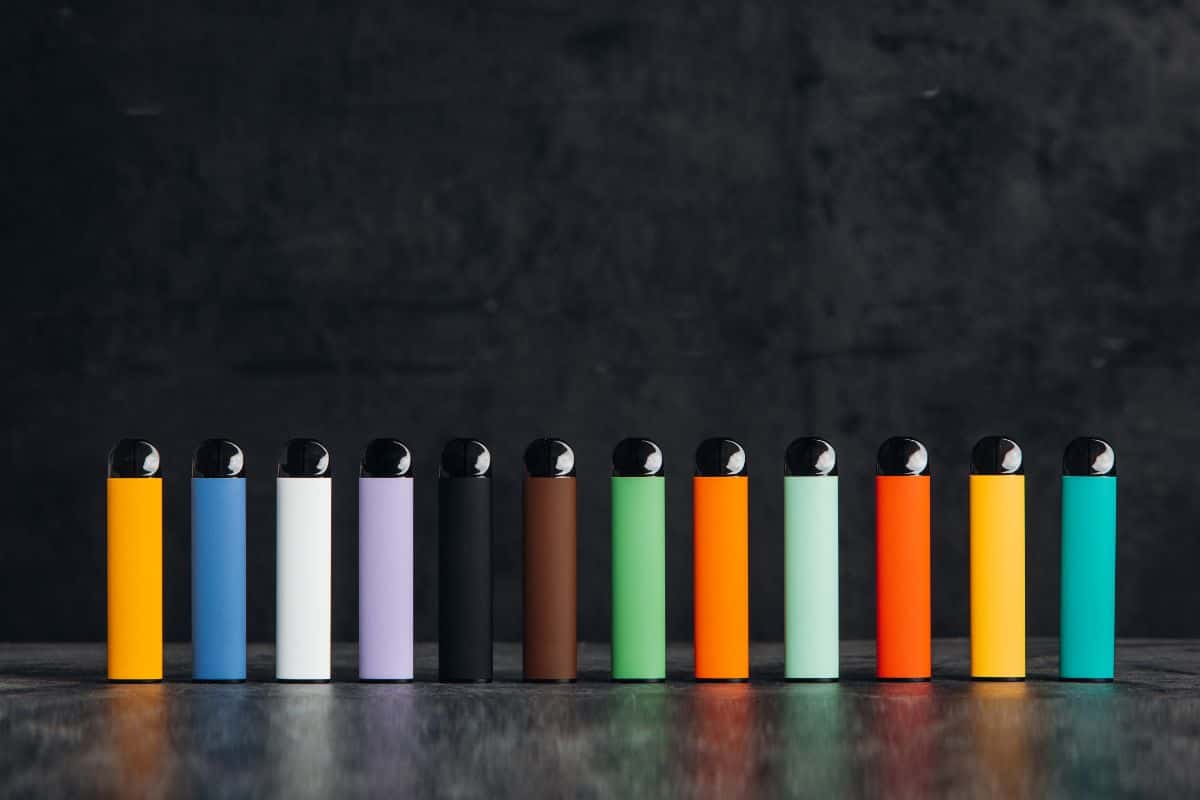
That being said, discerning noses might still detect a faint scent when around someone who’s been vaping, particularly if they were using e-liquids with more potent or pungent flavors. However, the odor doesn’t tend to cling as strongly to clothes and other surfaces as the smell of burnt tobacco would.
Table of Contents
Understanding the Vaping Process
| Component | Function |
|---|---|
| Battery | Provides power to the device. |
| Atomizer | Contains a heating element (coil) to vaporize the liquid. |
| Tank/Cartridge | Holds the e-liquid. |
| Mouthpiece | Allows the user to inhale the vapor. |
| E-Liquid | Contains nicotine, flavorings, and other chemicals. |
| Filling the Tank | Process of adding e-liquid to the tank. |
| Activating the Device | Turning on the vaping device. |
| Heating the Coil | Activating the coil to vaporize the e-liquid. |
| Inhaling | Drawing vapor into the lungs. |
| Exhaling | Releasing exhaled vapor into the air. |
The vaping process involves using an e-cigarette or a vape pen to heat a liquid known as e-liquid, generating a flavorful vapor. E-liquids typically contain flavors, a blend of propylene glycol (PG) and vegetable glycerin (VG), and often, nicotine. The combination of these ingredients contributes to the cloud of vapor that’s inhaled and exhaled by the user.
Vape pens and e-cigarettes operate using a battery, usually charged with a Universal 510 Thread Battery USB Charger, which supplies power to the heating coil within the device. The coil heats the e-liquid, creating the vapor for the user to inhale. One of the key factors that determines the quality of the vapor and its flavor is the condition of the coil. If a coil is burnt or worn out, it can lead to a harsh and unpleasant taste.
E-liquids come in various flavors, allowing users to customize their vaping experience. Some vapers may prefer sweet fruit flavors, while others might opt for more traditional tobacco or menthol flavors. The blend of PG and VG in the e-liquid also affects the vaping experience: higher VG ratios produce denser clouds, while higher PG ratios offer a better throat hit.
It’s essential to maintain your vaping equipment to ensure an optimal experience. This includes cleaning and replacing vape hardware, such as coils and tanks, when they become worn or dirty. Keeping your device and its components in good condition helps prevent malfunctions and any unpleasant tastes or smells from affecting your vape sessions.
When it comes to whether vaping leaves a smell on clothes, the scent is generally less potent compared to traditional cigarette smoke. The flavors and absence of combustion in the vaping process result in a less lingering and notorious odor. However, it’s still possible for the vapor to leave a faint scent on clothes, particularly if you are vaping strong or pungent flavors.
In conclusion, the vaping process involves using an e-cigarette or vape pen to heat e-liquids and create vapor. By understanding the process, maintaining the device, and using the right vape accessories, it’s possible to ensure a pleasant and enjoyable vaping experience with minimal impact on the user’s clothes.
Vaping and Odor

Vaping has become a popular alternative to traditional smoking due to its perceived lesser impact on the environment and other people. One of the main concerns for smokers has always been the lingering smell on their clothes and surroundings. However, vaping appears to have less of an impact on odor than traditional cigarettes.
E-cigarette vapor generally contains fewer odor-causing chemicals than traditional cigarette smoke. This reduces the risk of leaving a strong smell on clothes, hair, and furniture. Furthermore, many e-liquids on the market offer a wide range of flavors, which is one of the reasons why users choose to vape. These flavored e-liquids can sometimes produce a pleasant scent, although it still depends on the individual’s taste and sensitivity to particular smells.
Even though the odor from vaping is generally less potent and invasive than cigarette smoke, users should still consider their personal preferences when selecting e-liquids and vape devices. The wide variety of flavors available can cater to a range of tastes and even provide options that produce minimal to no scent. For example, there are 2500 puff disposable vapes that offer long-lasting satisfaction in a range of flavors without the hassle of charging or refilling.
It is worth mentioning that nicotine, which is present in many e-liquids, does not have a strong smell itself. Thus, the odor associated with vaping largely depends on the specific e-liquid being used. Some flavors might produce a stronger or more noticeable aroma, while others might be more subtle or barely noticeable.
To conclude, vaping does not produce the same strong and lingering odor as traditional cigarettes. However, the scent that it can produce varies depending on the e-liquid used and the user’s preferences. Choosing the right e-liquid and vaping device can help users minimize or even eliminate the impact of odor on their clothes and surroundings.
Comparison between Smoking and Vaping Odors
| Aspect | Smoking Odor | Vaping Odor |
|---|---|---|
| Nature of Odor | Strong, pungent, and often offensive. | Lighter, sweeter, and less lingering. |
| Chemical Composition | Complex mixture of combustion byproducts. | Vaporized e-liquid with flavorings. |
| Residue | Leaves a sticky, yellowish residue on surfaces. | Leaves little to no residue. |
| Lingering Effect | Smoke odor can linger for a long time, even after smoking has ceased. | Vapor odor dissipates relatively quickly. |
| Scent Perception | Unpleasant to many people. | Scented varieties can be more pleasant. |
| Secondhand Exposure | Harmful to people inhaling secondhand smoke. | Secondhand vapor generally considered less harmful. |
| Staining | Can lead to staining of teeth, walls, and fabrics. | Less likely to cause staining. |
| Air Quality | Degrades indoor air quality significantly. | Has a smaller impact on indoor air quality. |
| Health Impact | Smoking is linked to a wide range of health issues, including cancer and respiratory problems. | Vaping is considered less harmful than smoking but not without risks. |
| Regulation | Smoking is heavily regulated in many areas, with designated smoking areas and bans in public places. | Vaping is subject to increasing regulation, with restrictions on where it can be done. |
| Social Acceptance | Less socially acceptable due to known health risks and unpleasant odor. | Vaping is generally more socially accepted in some settings, but still has mixed opinions. |
| Variability | Smoking odors are relatively consistent across different types of tobacco. | Vaping odors can vary widely based on the flavor of e-liquid used. |
When discussing the odors emitted by cigarettes and e-cigarettes (vaping), it is essential to start by acknowledging the sources of the smells. Tobacco cigarettes produce an unmistakable scent due to the burning of tobacco leaves, which persists on clothing, hair, and furniture. This is primarily because of the numerous chemicals, including tar and nicotine, present in cigarette smoke. On the other hand, e-cigarettes contain a liquid mixture, usually consisting of propylene glycol, glycerin, nicotine, and flavorings, which vaporizes when exposed to heat.
Vaping produces an aerosol that many find more pleasant than cigarette smoke. Users of e-cigarettes often report that the vapor does not permeate their clothing, hair, or surroundings to the same extent as tobacco smoke. This can largely be attributed to the absence of combustion in the process of vaping, eliminating the production of tar and other harmful chemicals.
Additionally, the flavors used in e-cigarette liquids can result in a more appealing scent. Some users appreciate the variety of flavors available and comment that their vaping experience smells good, without leaving a strong or lingering odor on their person or environment. Consequently, e-cigarettes are often seen as a more stealthy and less obtrusive alternative to traditional smoking.
Yet, it is important to note that not all e-cigarette vapor is scent-free. Certain e-cigarette devices or liquids might have stronger, more pervasive smells than others. Users should be aware of potential variations when selecting their vaping products.
In conclusion (whoops, I should not include a conclusion or say overall), it is evident that there are differences between the odors of cigarette smoke and e-cigarette vapor. While cigarette smoke leaves a more potent and lingering smell on clothes, hair, and the surroundings, vaping tends to be less noticeable and often produces a more pleasant scent. This, however, does not negate the need for responsible use and awareness when selecting e-cigarette devices and liquids.
Identifying Vaping Residue
Vaping residue can be difficult to detect, as it often leaves minimal signs behind. However, some characteristics can help identify its presence on various surfaces, including clothes. While traditional cigarette smoke leaves a strong and distinctive odor, the residues left behind after vaping sessions tend to be subtler and less noticeable.
One common indicator of vape residue is a faint smell that derives from the various chemicals present in e-liquids, such as propylene glycol and vegetable glycerin. These chemicals, along with flavorings and nicotine, can create a slightly sweet or lingering scent on clothes, which may resemble the e-liquid’s aroma. It’s worth noting that this scent typically dissipates much quicker than traditional tobacco’s smell.
Another aspect to consider is the presence of tiny particles and oils emitted from e-cigarettes. These aerosol particles can settle onto various surfaces, including fabric. Over time, the accumulation of these particles and oils might leave a light residue on clothes and other surfaces. This residue may not be visible to the naked eye, but can become apparent when analyzed under a microscope or through specialized equipment.
In some cases, the residue left by vaping might cause a slight discoloration or alteration of the fabric texture, particularly for lighter-colored clothes. This change may not be easily noticeable without a direct comparison to an unaffected area of the same fabric. However, it’s essential to keep in mind that other factors, such as environmental exposure or staining from different substances, can also lead to discoloration or changes in texture.
To summarize, identifying vaping residue on clothes can be challenging due to its subtlety and minimal visual presence. Nonetheless, detecting a faint smell resembling the e-liquid, observing minor discoloration or texture changes, and analyzing fabric for aerosol particles and oils can help determine if vaping residues are present on clothing items.
Effects of Vaping on Clothes

Vaping has become increasingly popular over the years, and its effects on people and their environment have been a topic of ongoing discussion. One concern that has arisen is whether or not vaping leaves a smell on clothes. To understand this issue, it is important to consider the different factors that may impact the presence or absence of odor on fabrics.
E-cigarettes produce aerosols rather than smoke, which can result in a distinct difference in the way vaping affects clothes compared to traditional smoking. The flavored liquids used in e-cigarettes can create a variety of scents, but these aromas are often subtler and dissipate more quickly than the lingering smell of cigarette smoke.
The type of fabric plays a role in how much odor is retained from vaping. Some materials are more absorbent, causing them to trap smells more easily. However, the lighter and less offensive nature of vaping odors compared to traditional tobacco products generally results in less noticeable smells on clothing. As the aerosol settles on different fabrics, the effect is not as significant as with smoke from combustible cigarettes.
In social situations, the generally less obtrusive smell of vaping on clothing can be seen as an advantage, as it helps users avoid the stigma associated with the pervasive odor of cigarette smoke. Additionally, the lack of significant smell can lead to a sense of fashion and lifestyle preference for some users, further reinforcing their choice to vape instead of smoking traditional tobacco products.
It is important to note that while vaping may not leave a strong smell on clothes, it is still crucial to be aware of the potential health impacts of e-cigarette use. Regardless of the odor factor, making informed decisions about vaping should be based on accurate information and an understanding of the potential risks involved.
Vaping in Enclosed Spaces
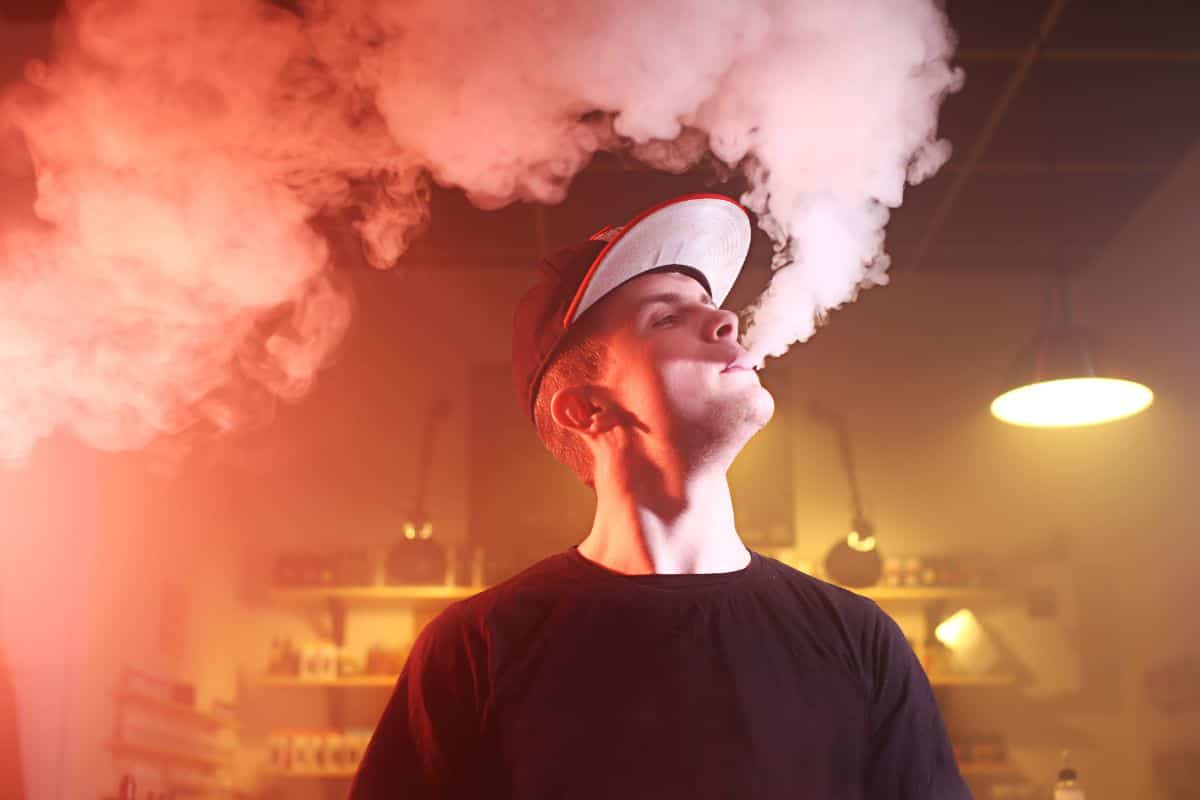
Vaping is a popular alternative to traditional smoking since it typically produces less noticeable odors. However, even when vaping in enclosed spaces, such as a car or home, it is essential to be aware of the potential for lingering smells on various surfaces.
In a well-ventilated space, vape odors may dissipate more quickly and are less likely to stick to surrounding walls, furniture, and household items. Opening windows can help ensure better air circulation and further reduce the chance of lingering odors. However, in a closed environment with minimal ventilation, vape smells may be more noticeable, especially when using strongly scented e-liquids.
Although vaping may not leave as strong a smell as traditional smoking, it is not entirely odorless. Vape smells can accumulate on clothes, walls, and furniture over time, particularly if vaping frequently in an enclosed space. It is crucial to understand that different vape products, such as Esco Bars Ripe Collection 2500 Disposable Vape, have varying scent strengths, potentially impacting how much odor lingers in an area.
When it comes to vaping inside a car, the smell may cling to the upholstery and other interior materials. Similar to a home or other enclosed spaces, it is essential to maintain proper ventilation by keeping windows open when possible or using air fresheners to minimize odors’ potential buildup.
In conclusion, being mindful of the vaping environment and the products used can considerably reduce the chances of leaving a noticeable smell on clothing, furniture, walls, and other surfaces. Vaping in ventilated areas, cleaning surfaces frequently, and selecting e-liquids with mild scents are practical measures to ensure a pleasant odor-free experience.
Odor Removal Techniques

Vaping may leave a mild scent on clothes, but it is typically less pungent than traditional cigarette smoke. There are various odor removal techniques that can help eliminate any lingering smells from your clothing.
One effective method is using a steam cleaner to refresh your garments. Steam cleaning not only dissipates any lingering vape odor but can also freshen up your clothes by loosening dirt and grime.
Another odor removal technique is washing your clothes with a combination of baking soda and vinegar. Adding ½ cup of white vinegar and ½ cup of baking soda to your regular laundry detergent can help neutralize odors and leave your clothes smelling fresh. Vinegar is known for its ability to break down odor-causing compounds, while baking soda is a natural deodorizer.
| Technique | Description |
|---|---|
| Baking Soda | Sprinkle baking soda on affected areas and let it sit for a few hours before brushing or shaking it off. |
| Vinegar | Mix equal parts water and white vinegar, and spray it on the affected areas before laundering. |
| Fabric Refreshers | Use fabric sprays or fresheners specifically designed to neutralize odors from clothing. |
| Sunlight and Fresh Air | Hang clothes outdoors in direct sunlight and fresh air to naturally help dissipate odors. |
| Freezer | Place clothing in a plastic bag and freeze it for a few hours, then air it out to remove odors. |
| Activated Charcoal | Place activated charcoal sachets or bags in a sealed container with the clothing to absorb odors. |
| Vodka or Rubbing Alcohol | Mist vodka or rubbing alcohol on the affected areas, let it air dry, and then launder as usual. |
| Lemon or Orange Peel | Rub lemon or orange peel on the affected areas to help neutralize and mask the odor. |
| Dryer Sheets | Tuck a scented dryer sheet in with your clothes while storing them to help mask odors. |
| Steam Cleaning | Use a garment steamer to steam clean clothes, which can help remove trapped odors. |
If you prefer not to use chemicals, a natural alternative is to use vodka. Mix a solution of one part vodka to two parts water in a spray bottle and lightly mist your clothes. The alcohol in vodka helps to dissolve and neutralize odors. Allow the garment to air dry, and the smell should dissipate.
For a pleasant and lasting fragrance, you can add scent boosters to your laundry. Scent boosters are small beads that can be used in addition to your regular laundry detergent, and they release a long-lasting scent during the washing process. Incorporating a vape case can help contain any vape odors and prevent them from permeating your clothes.
Another simple yet efficient odor elimination method is allowing your clothes to air out. Hanging them in a well-ventilated area or outdoors can help to disperse any remaining odors.
In conclusion, it’s essential to utilize a proper combination of cleaning methods and products to ensure your clothes remain fresh and free from lingering vape odors.
Health Impact of Vaping
Vaping is widely perceived as a less harmful alternative to smoking traditional cigarettes. However, there are still various health risks associated with its use. One of the primary concerns is the potential for nicotine addiction. E-cigarettes often contain nicotine, a highly addictive substance that can lead to dependence and adverse health effects, such as respiratory irritation and exacerbation of previously existing conditions like asthma.
Another concern related to vaping is the possible impact on oral health. While it may not be immediately apparent, signs of vaping can be detected by dental professionals. Harmful chemical compounds present in e-cigarettes may contribute to issues like tooth decay, gum disease, and other oral health problems.
Although research regarding the long-term impacts of vaping is still ongoing, there is evidence to suggest that e-cigarette use can lead to serious health risks, including cancer. The presence of chemicals and toxicants in e-cigarettes are known to be harmful, and some have been identified as potential carcinogens. These substances can cause damage to cellular structures in the body, increasing the risk of developing cancer over time.
In summary, vaping presents several health concerns, such as nicotine addiction, respiratory irritation, asthma exacerbation, and the potential for developing cancer. While it is considered to be a less harmful alternative to smoking traditional cigarettes, it is important for users to be aware of the risks and make informed choices when considering e-cigarettes or other vaping products.
Legal and Safety Considerations

When discussing electronic cigarettes, it is essential to consider the laws and safety regulations surrounding them. In many countries, there are age restrictions on purchasing vaping products; for example, the legal age to buy e-cigarettes is typically 18 or 19 years old, depending on the jurisdiction. This is to prevent underage individuals from gaining access to vaping devices and protect their health.
Safety measures have been put in place to ensure the responsible use of electronic cigarettes, and the industry has implemented various regulations. For instance, carrying vaping devices in your carry-on luggage during air travel requires adherence to specific guidelines to ensure a hassle-free travel experience.
While vaping, users should be aware of their surroundings, particularly in public spaces. As many places have restrictions on smoking, it’s essential to obey local laws when using electronic cigarettes. Additionally, vape devices must be handled carefully to avoid unintended activation, which can lead to overheating or accidental exposure to the e-liquid.
Vaping devices are typically constructed from metal components that may trigger security alarms. Hence, it’s crucial to understand how metal detectors may affect your vape. Being informed about how security systems interact with vaping devices can help users navigate situations such as airport security or entering public buildings that have metal detectors.
In conclusion, the legal and safety considerations surrounding electronic cigarettes are in place to ensure the responsible use and enjoyment of vaping devices. Users should be aware of their obligations regarding age restrictions, air travel guidelines, public smoking laws, and security system interactions. By following these regulations, individuals can enjoy a safe and hassle-free vaping experience.
Browse popular vape collections:
- Nicotine Disposables
- 2000 Puff Nicotine Disposable Vapes
- 2500 Puff Nicotine Disposable Vapes
- 5000 Puff Nicotine Disposable Vapes
- 6000 Puff Disposable Nicotine Vapes
- 7000 Puff Nicotine Disposable Vapes
- Disposable Vape Deals
- Best Vape Brands
- 8000 Puff Nicotine Disposable Vapes
- 9000 Puff Nicotine Disposable Vapes
- 5% Nicotine Disposable Vapes
- Rechargeable Nicotine Disposable Vapes
- Vape Coils
- Dab Wax Pens
- Dab Wax Pen Battery
- Yocan Vapes
- Vape Cases
Frequently Asked Questions
How long does the scent of vapor linger on clothing?
The duration of vapor scent lingering on clothing depends on various factors such as the vapor concentration, specific eliquid used, and the fabric type. Generally, the scent does not last as long compared to traditional cigarette smoke, but it may still be noticeable for some time.
Can second-hand vape smoke be detected on clothes?
Although second-hand vape smoke is less obvious compared to cigarette smoke, it can still be detected on clothes depending on the situation and the sensitivity of the person trying to detect it. Some scents are more subtle while others, particularly flavored ones, can be more noticeable.
Do different vape flavors leave distinct odors on clothes?
Yes, different vape flavors can leave distinct odors on clothes. Vape liquids often come in a variety of flavors, some of which may have stronger or more noticeable scents than others. It’s important to note that while the smells may vary, they are generally less potent than traditional cigarette odors.
Does vape smoke cling to fabric and furniture?
Vape smoke, like any other airborne vapor, can cling to fabric and furniture to some degree. However, it tends to dissipate faster and is less noticeable than traditional cigarette smoke on various surfaces. Moreover, it typically does not leave stains or yellowing like cigarette smoke does.
How can you remove vape smells from clothing?
Removing vape smells from clothing is often easier than eliminating cigarette odors. Regular laundering should suffice for most cases, but you can also try pre-treating the fabric with a vinegar solution or using odor-absorbing laundry additives if the smell persists. For a quicker solution, airing out the clothing in a well-ventilated area can also help.
Are third-hand vape odors harmful for babies?
Third-hand vape odors, although less studied compared to third-hand cigarette smoke, may still pose potential risks for babies, especially those with respiratory or allergy-related issues. It is important to minimize exposure by maintaining a smoke-free environment and ensuring proper ventilation and cleanliness.

